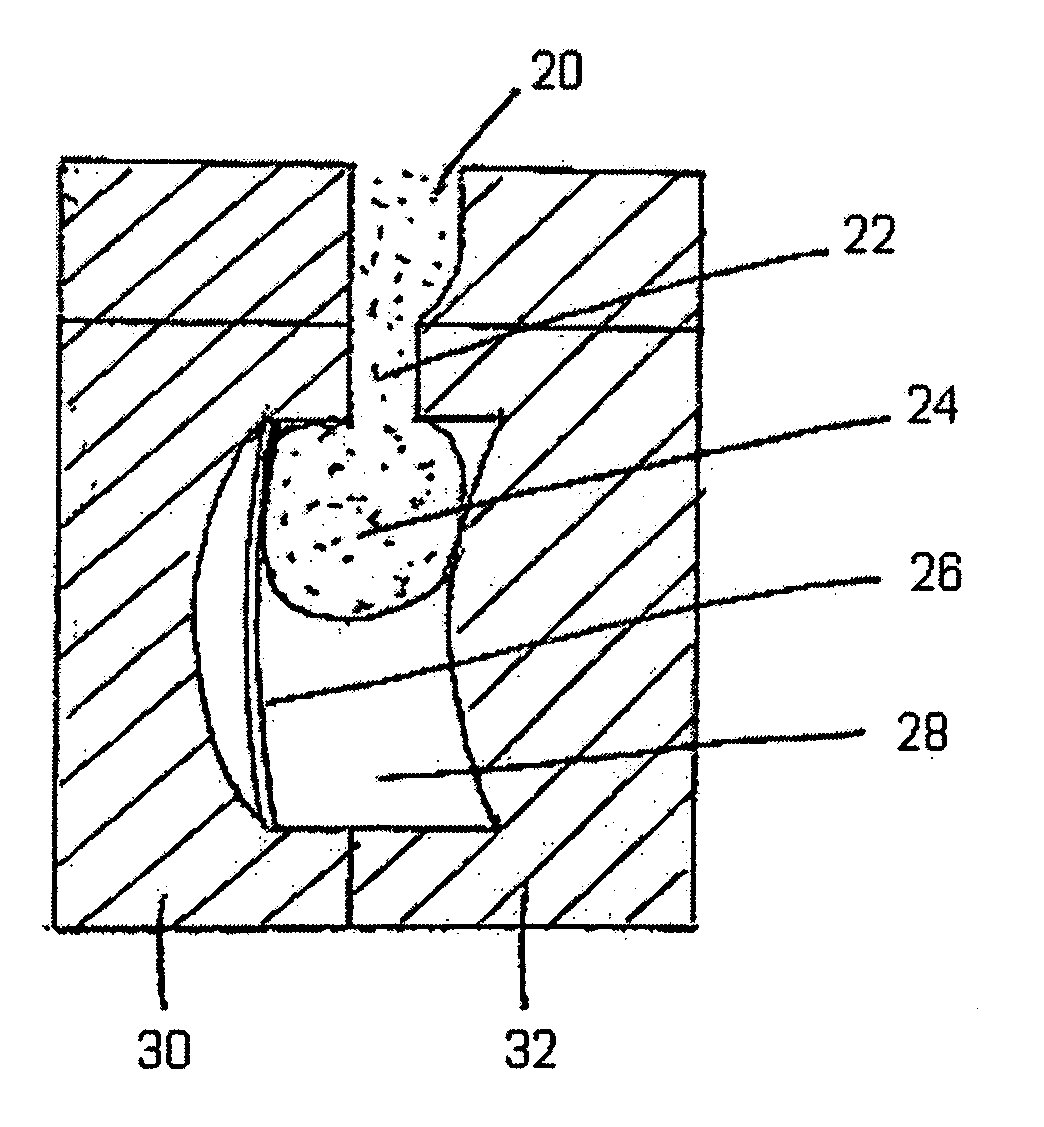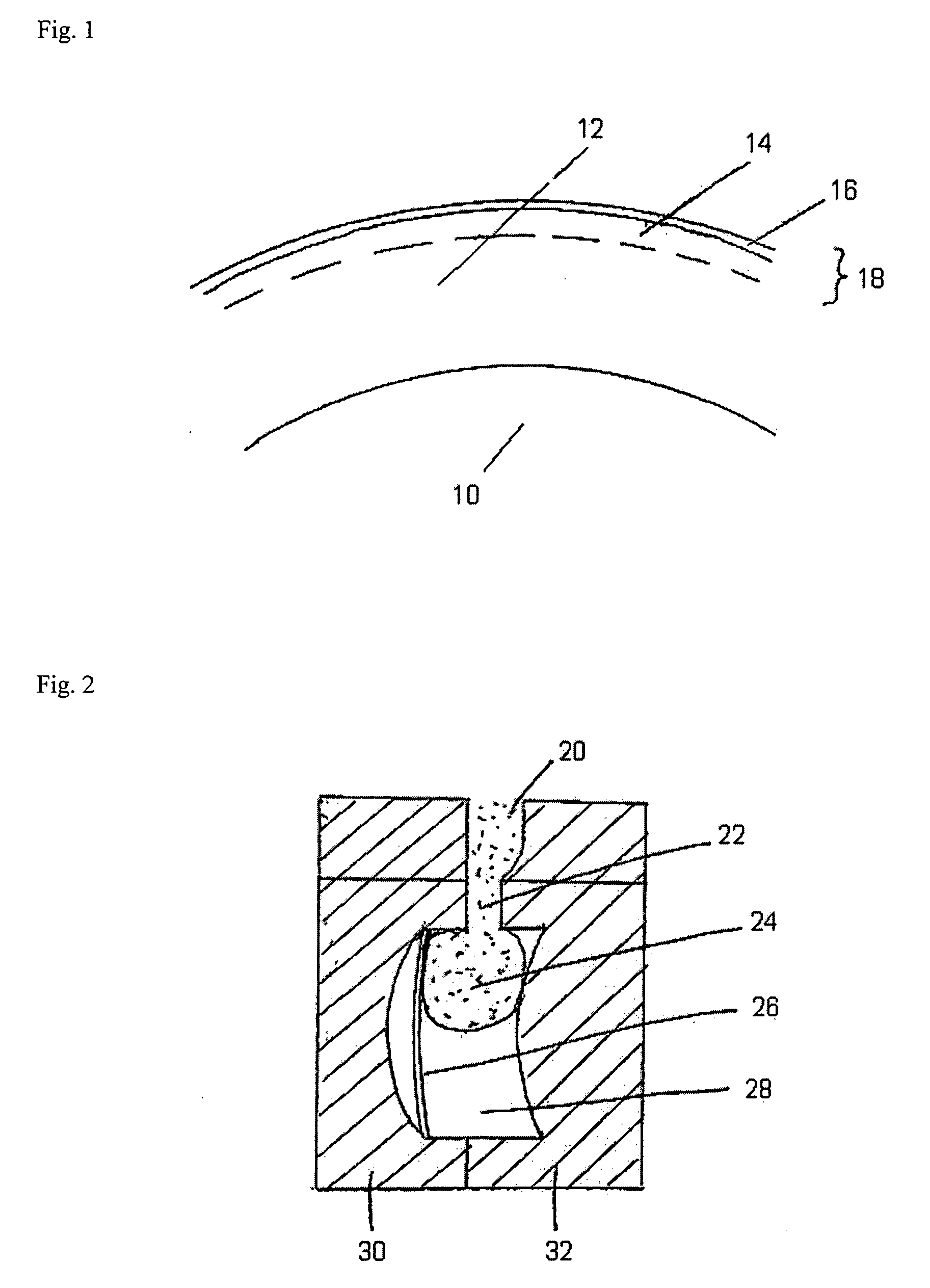Process to mold a plastic optical article with integrated hard coating
a technology of plastic optical articles and hard coatings, which is applied in the field of plastic optical articles with integrated hard coatings, can solve the problems of inapplicability to polycarbonate is very susceptible to surface scratches, and has low resistance to some common chemicals and solvents compared to other materials, and the technique of molding plastic optical articles such as ophthalmic lenses is limited
- Summary
- Abstract
- Description
- Claims
- Application Information
AI Technical Summary
Problems solved by technology
Method used
Image
Examples
example 1
[0055] A 0.3 mm thick polycarbonate film (Iupilon.TM., manufactured by Mitsubishi Gas Chemical Co., Inc.) was punched into discs of 72 mm. One side of the discs was applied with three thermally-cure polysiloxane coatings (Table 1). The coating solutions have a solid level of 18% to 20% and viscosity from 3.5 to 4.5 cPs. Coating solution was used at 50.degree. F. The solution was spin applied at the speed of 500 rpm to a resulting thickness of 3 to 3.5 microns.
[0056] After precuring the coating at 180.degree. F. for 15 minutes, the discs were placed in the mold cavities of an injection molding machine with the coated side facing the mold wall maintained at 285.degree. F. Polycarbonate melt at 600.degree. F. was then injected into the cavity, against the uncoated side of the film. The polycarbonate resin was then cooled down under the hold and pack pressure of 1000 psi to form semi-finished single-vision lenses with a 6-diopter base curve. The molded lenses were then put in an oven at...
PUM
| Property | Measurement | Unit |
|---|---|---|
| thickness | aaaaa | aaaaa |
| thickness | aaaaa | aaaaa |
| thickness | aaaaa | aaaaa |
Abstract
Description
Claims
Application Information
 Login to View More
Login to View More - R&D
- Intellectual Property
- Life Sciences
- Materials
- Tech Scout
- Unparalleled Data Quality
- Higher Quality Content
- 60% Fewer Hallucinations
Browse by: Latest US Patents, China's latest patents, Technical Efficacy Thesaurus, Application Domain, Technology Topic, Popular Technical Reports.
© 2025 PatSnap. All rights reserved.Legal|Privacy policy|Modern Slavery Act Transparency Statement|Sitemap|About US| Contact US: help@patsnap.com



